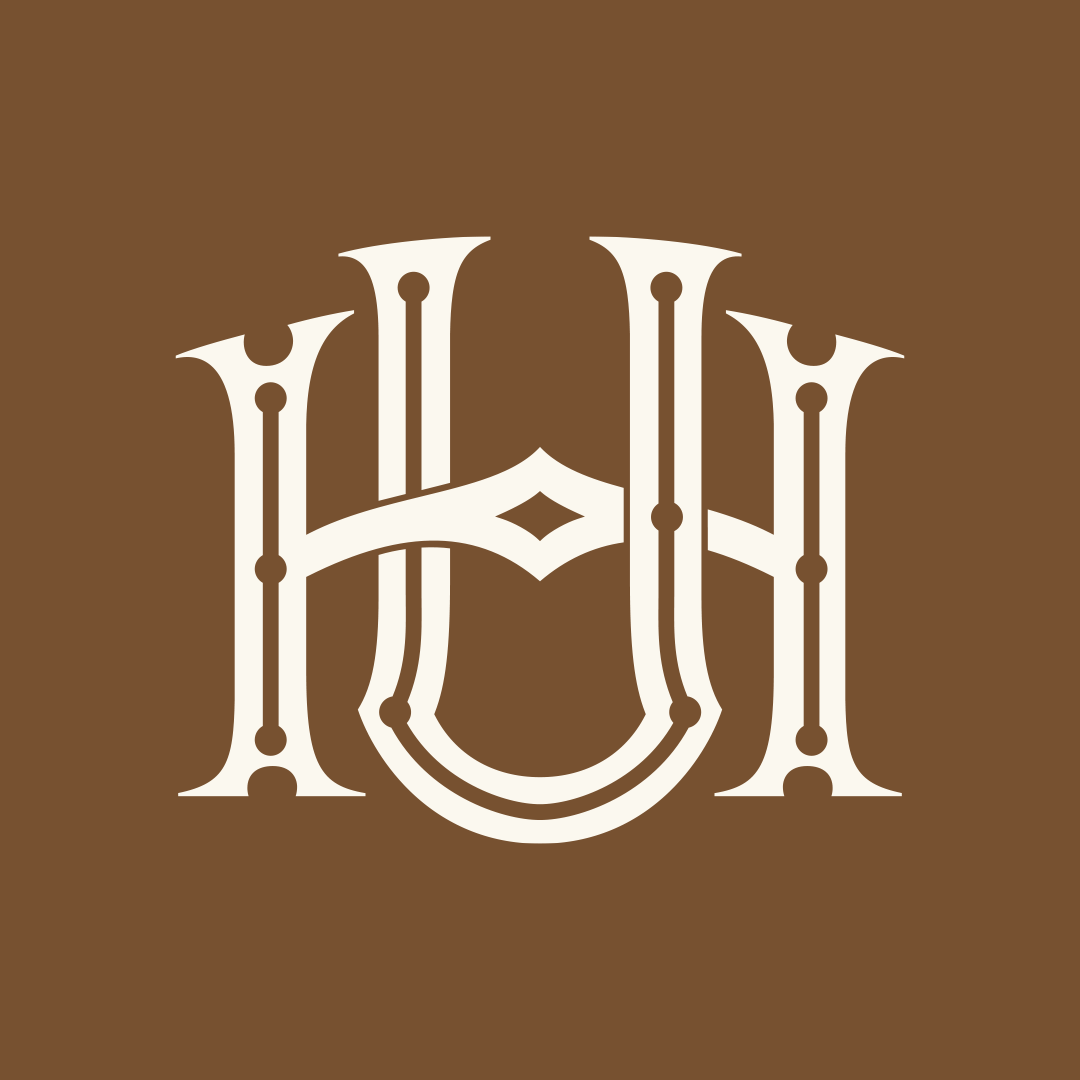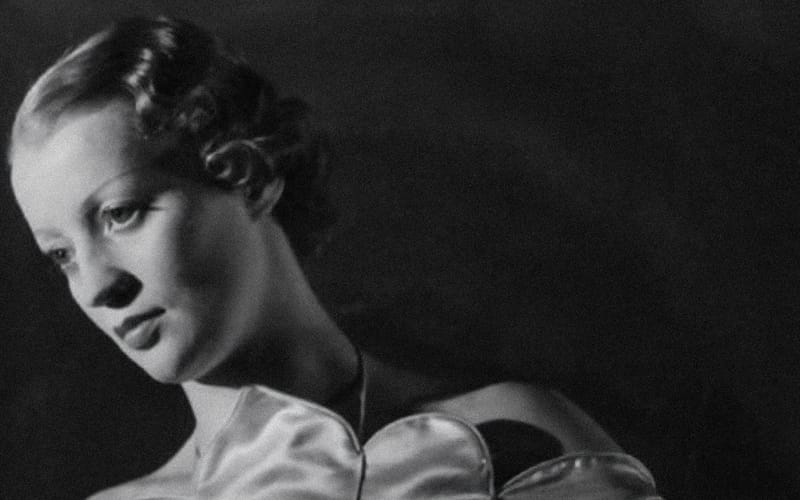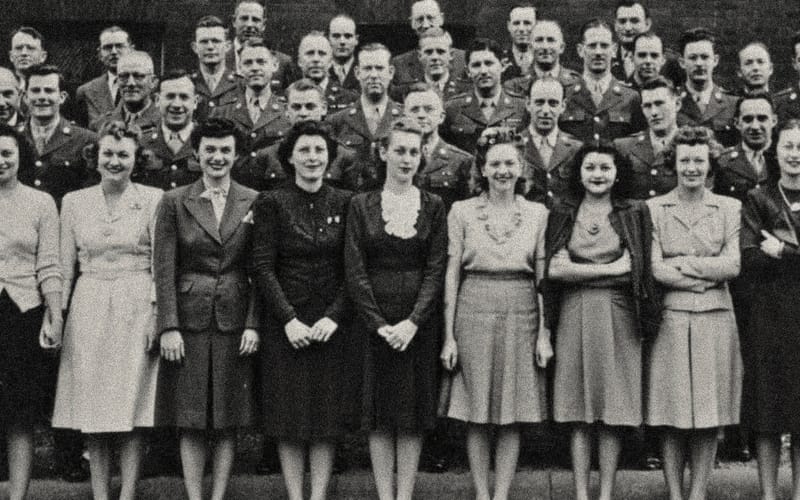Excerpt: The Ruin of All Witches
Life and Death in the New World
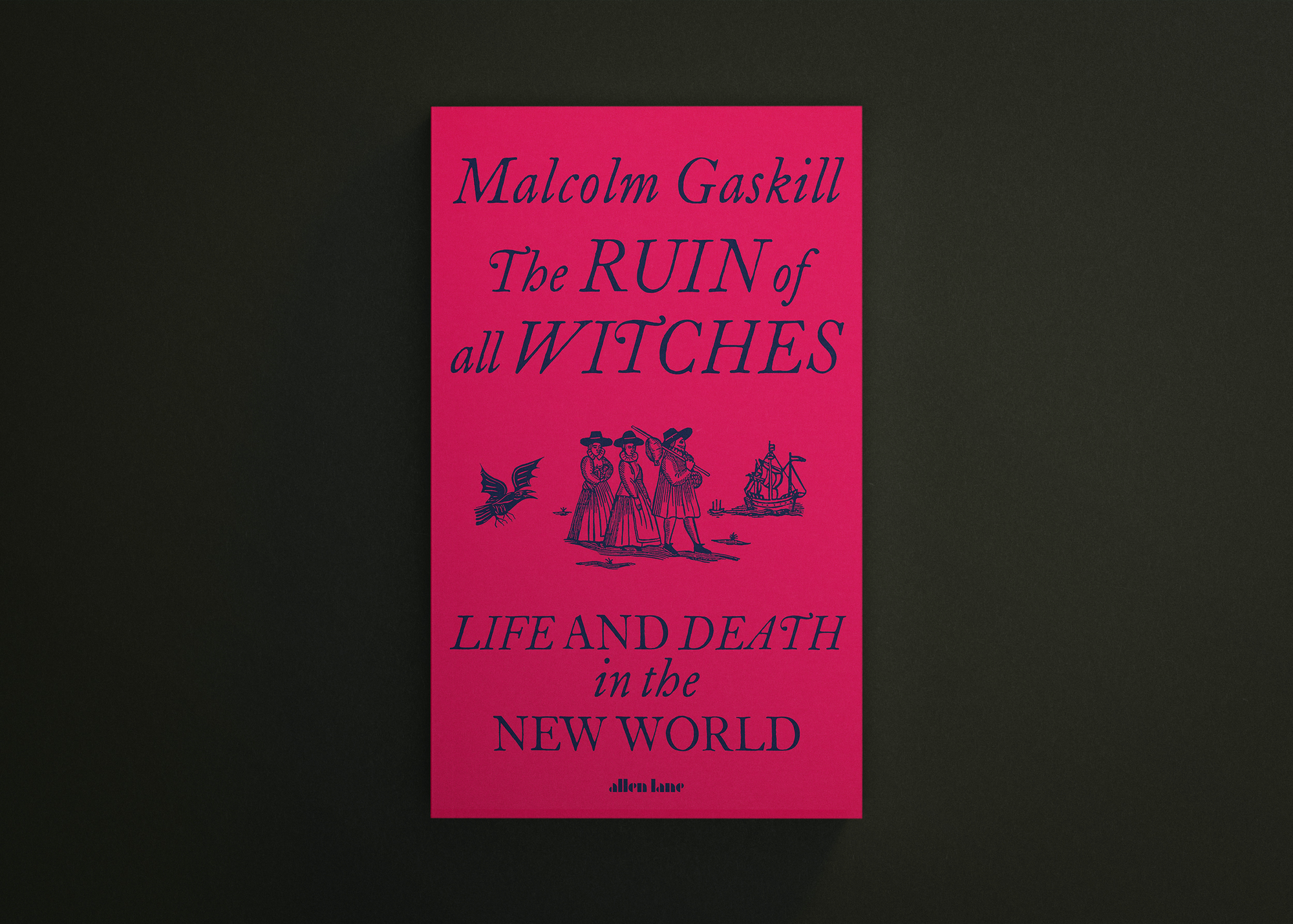
The Ruin of All Witches tells the dark, real-life folktale of witch-hunting in a remote Massachusetts plantation, when English settlers' dreams of love and liberty gave way to paranoia and terror, enmity and rage. Drawing on previously neglected source material, Malcolm Gaskill brings to life a New World existence steeped in the divine and the diabolic, in curses and enchantments, and precariously balanced between life and death.
With an exclusive foreword for Unseen Histories by Malcolm Gaskill

There was once a great river, and beside it in a forest clearing stood a small town, home to migrants carving a new world from the wilderness. Most had prospered, but all faced peril from the indigenous population, harsh weather, and each other. As the settlement grew, grudges between neighbours festered. Harvests failed; there were plagues and floods and infestations – God’s punishments on a sinful people. The devil, it seemed, was among them, perhaps even recruiting witches.
This is a folktale, but a true one. It all happened around 1650 in Springfield, a remote frontier settlement in western Massachusetts. The town’s turbulent brickmaker Hugh Parsons and his fretful wife Mary fell under suspicion of witchcraft, and as their marriage collapse they even accused one another. Misfortunes followed until the people could bear no more. So began an extraordinary investigation into Hugh and Mary, laying bare their private lives and condemning them to ruin.
Based on unique documentary evidence, this book connects the burning issues of the revolutionary Atlantic world with the trials and dilemmas of colonial government, right down to the politics of neighbourhoods and households, even into the intimacies of the bedchamber and the secrets of the tormented heart. As a study of dangerous passions, of courtship and marital breakdown, of demands impossible to meet, and of degradation and death, it explores an alien world of supernatural belief shot through with universal themes of love, desire, envy, rage and grief. — Malcolm Gaskill


A Voice That Said ‘Death’
An abridged excerpt from The Ruin of All Witches: Life and Death in the New World
Once, beside a great river at the edge of a forest, there stood a small town. Time has erased its every trace, but we can imagine it, quiet and still, settled under a pall of late winter darkness. A man is hurrying home along the main street, to his left a trickling brook and a fathomless bank of trees, to his right a curve of clapboard houses with steep roofs and leaded windows. Down the narrow lanes between homesteads he glimpses the moonlit river, in spate from the thaw. The air is ice-sharp, tinged with smoke and resin, the only sounds the rush of water, the muffled bellows of cattle and the distant cry of a wolf. It feels like the edge of the world, and to those who have settled here it is. Beyond the mountains to the west lie uncharted lands, as mysterious as the heavens, inhabited by people of an unknown, perhaps hostile, disposition.
It is February 1651. The man’s name is Jonathan Taylor, and he has had an unsettling day, which is not over yet. Arriving home, Taylor lifts the door latch, treading softly to avoid waking his wife, who is eight months pregnant, and their infant girl beside her. They have lived in the young plantation of Springfield for two years, labouring to make something of themselves in this new land. The family sleeps downstairs in one bed near the glowing hearth, which flickers shadows round the low-ceilinged room. Taylor undresses, slips between the coarse sheets. He closes his eyes. But then he’s awake, the room suffused with light. He sits up rigid with fear, sensing movement on the floor. He forces himself to look. Three snakes are slithering towards him. He glances at his wife but doesn’t rouse her, afraid the shock will hurt their unborn child. Nor does he want his daughter to see.[1]
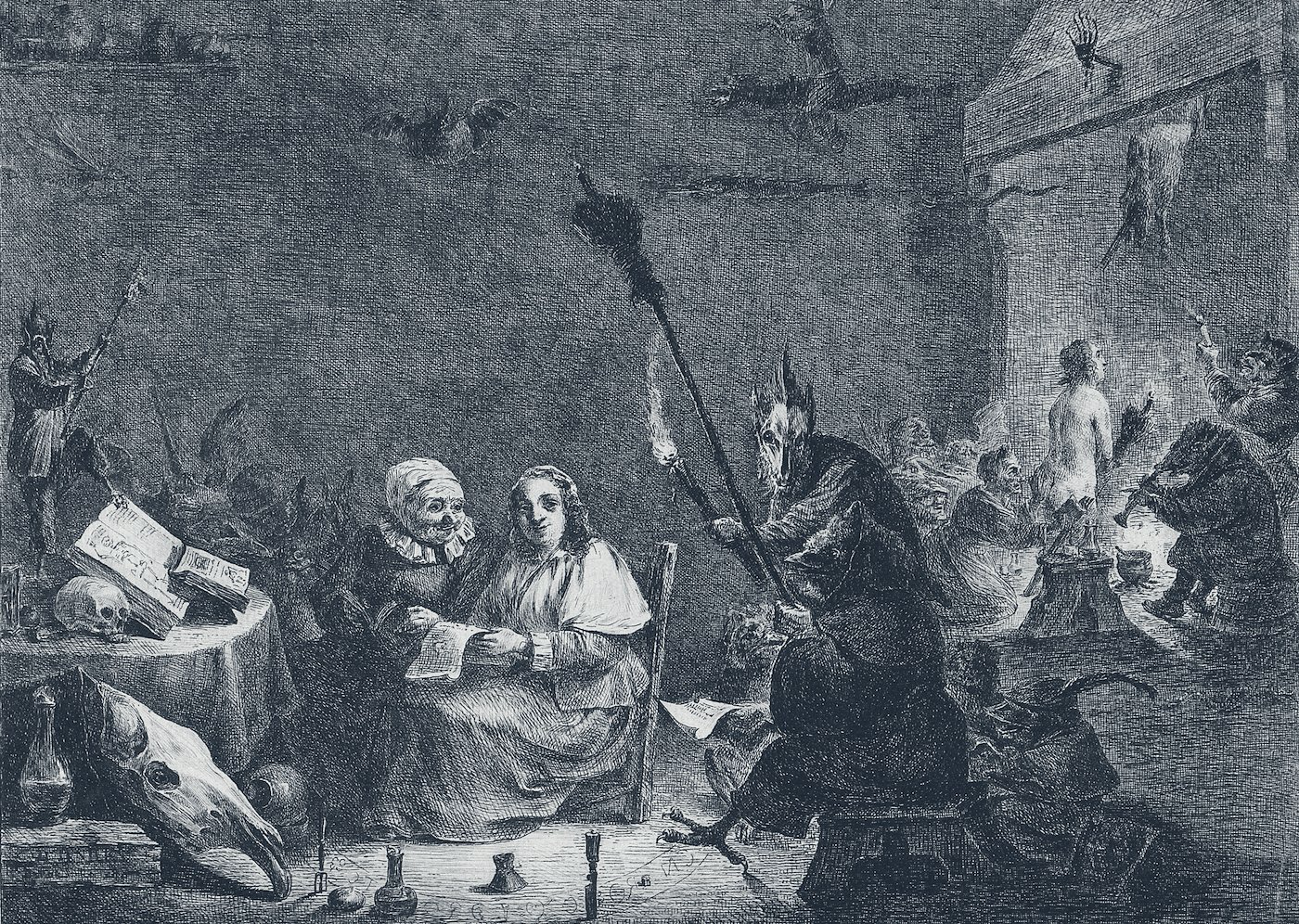
The smallest snake, black with yellow stripes, slides up the side of the bed. Taylor strikes it off, but it returns. Again he lashes out. Heart pounding, he shrinks back against the bolster. Daring to raise his head again, he meets the snake’s beady eye. With a flick of its jaws, the creature sinks its fangs into Taylor’s forehead. The pain is excruciating, but Taylor is too petrified to move. In the deep voice of a man – a voice he recognizes – the snake breathes the word ‘death’. Trembling, Taylor splutters that no man ever died from such a bite. Then, the room snaps back to darkness, and the snakes are gone. Taylor’s tremors wake his wife. Unable to calm him, she asks if he’s cold and whether she should warm his clothes. He replies that he’s hot and sick and falls back on the bed, shaking and sweating. All that Thursday night he writhes feverishly, his mind a confusion of images. But in the morning Taylor is clear about one thing. He knows who to blame for his torment: the brickmaker, Hugh Parsons.
Jonathan Taylor is not alone in suspecting Parsons. Two days ago, on Wednesday, the constable arrested Hugh’s wife Mary as a witch – the first that Springfield has known. Once, witches were unheard of in New England, but recently a plague of accusations has infected the colony. Back across the Atlantic, Old England has also been scourged by witch-panics, reports of which arrive by letter and word of mouth. Stories that by day are food for gossip, after dark fuel nightmares. Colonists fear God but also the devil and believe that witches can send beast- like demons to hurt them. Such thoughts were always present, but now witchcraft has become real among the settlements of the Connecticut valley, lonely outposts of piety and trade, of which Springfield is the most northerly. Meanwhile, rumours of heresy dog the town’s all-powerful governor, William Pynchon. These days, anything seems possible.
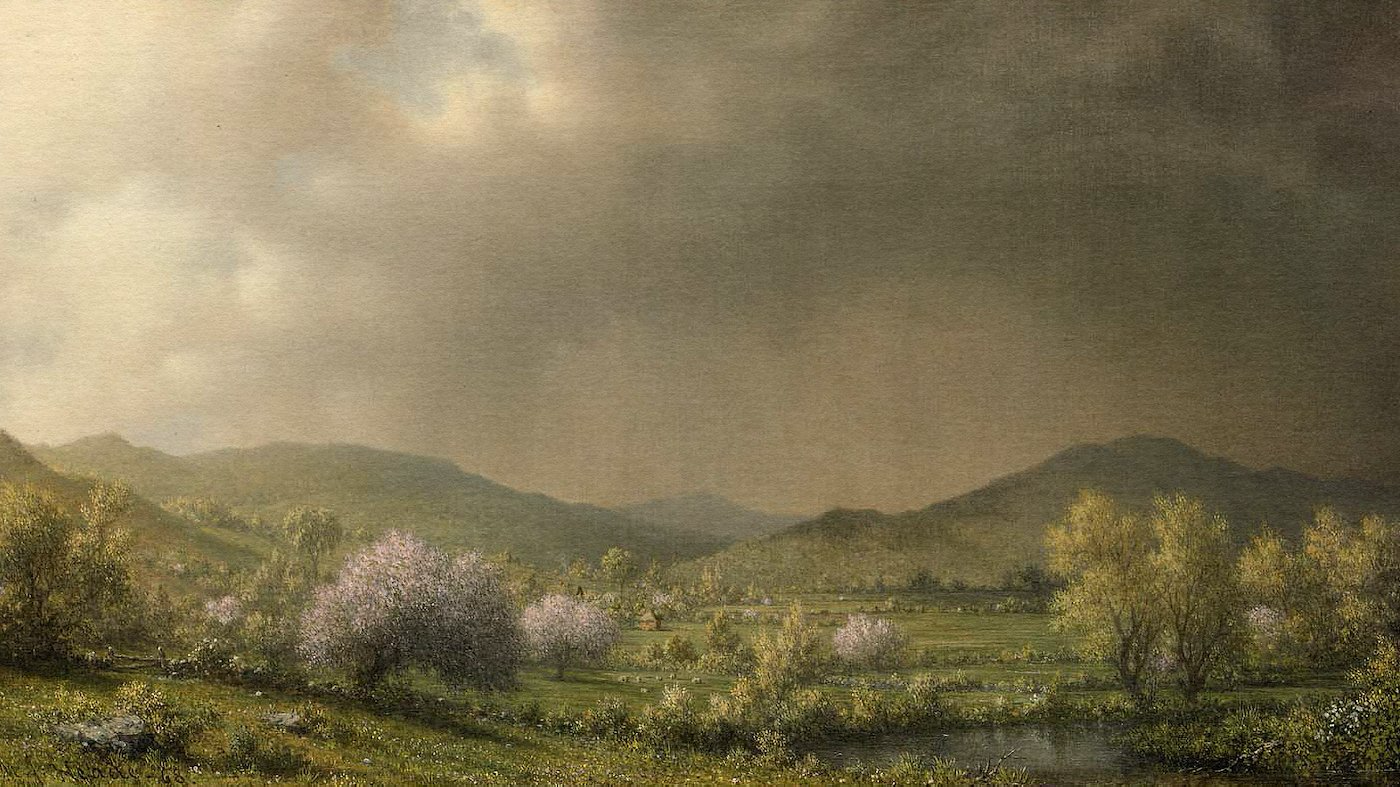
Hugh Parsons is a working man in his thirties, who says little but radiates discontent. He left England several years ago, and has spent the last six in Springfield, at odds with the world. After Mary’s arrest, he tossed and turned through Wednesday night – worrying for her sake, perhaps, but also for himself. The following morning Hugh came looking for the constable, a Welshman named Thomas Merrick, eager to know what was happening. The constable wasn’t around; Jonathan Taylor, labouring in Merrick’s barn, was. Hugh asked Taylor if he knew who had pointed the finger at his wife. Taylor replied tersely that he – Hugh – would know soon enough. Just then Merrick appeared, marching Mary to the house of William Pynchon, who was also Springfield’s magistrate, for questioning. Hugh did nothing. Strangely calm, he sat in the barn until dusk, waiting until Taylor had finished, then, as Taylor went up to Merrick’s house, followed him. The constable was still not back, but his wife said the two men could help themselves to beer. Taylor went, down to the cellar, but the barrel plug was so stiff it hurt to twist it. When Sarah Merrick tried, it came out easily. ‘What are you, a witch?’ quipped Taylor: a risky joke. Back upstairs, Goody Merrick made light of it all and was sorry about Taylor’s sore hand, which she showed to Parsons. He said nothing, convinced that Taylor’s joke was on him. The two men then went to their homes, Taylor scarcely imagining what lay ahead that night.
The next day – Friday – Taylor complains of what he described as ‘fits’ racing through his body. His panicked wife summons their neighbours. What if Jonathan were to die? She has a child of seventeen months and another in the womb. Angry and afraid, the townsfolk go to Pynchon and demand that Hugh Parsons be arrested. After all, others in the community have recently suffered at the hands of witches. Two years ago the town barber was traumatized in bed at night by a fiery apparition of a boy, for which he now blames Parsons.[2] The saturnine brickmaker is seized and bound with chains. Pynchon investigates, determined to restore peace, yet aware that he, too, is a fountain of dissension. From every corner of the town come disturbing tales and outbursts of anger and anguish. Hugh and Mary Parsons can only wait, thinking about the calamitous last few years and wondering what will become of them.
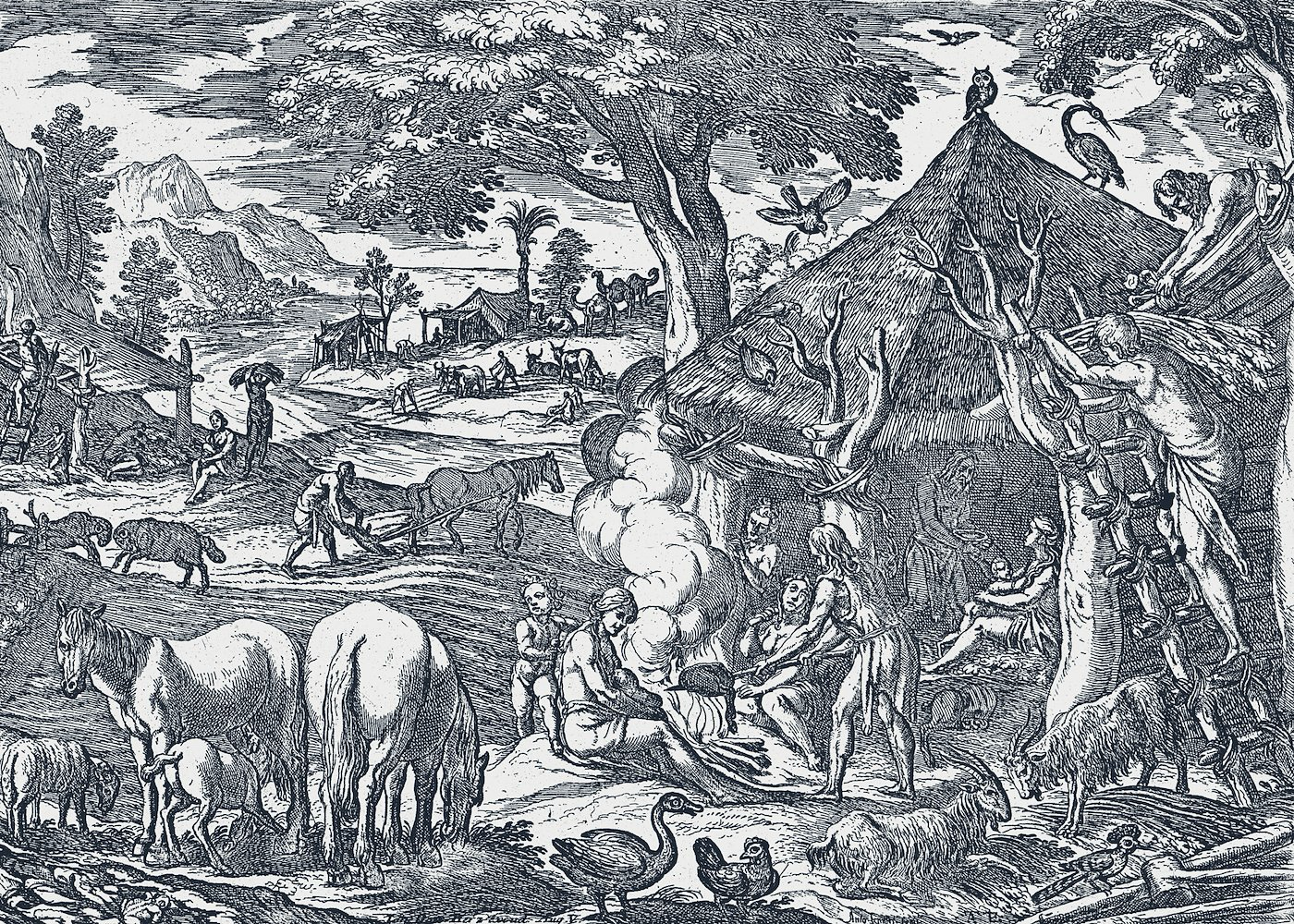
Some families in the valley had only recently left the riverside burrows they had dug upon arrival in Connecticut. But Pynchon’s leadership meant everyone in Springfield had always had a timber-framed house with a roof sharply angled against heavy snow, some with lean-tos at the rear. There were two downstairs rooms: a hall, where the hearth was, and a smaller parlour to one side. Cellars for cool storage, rare in Old England, were lined in planks with floors of sandstone hauled from the river. Low-beamed rooms were dingy and cluttered, rank with woodsmoke and the stale odours of cooking. Windows were few, small, and covered by shutters or canvas if glass was unavailable – which it often was, costing a day’s wages for a single imported pane. But unventilated stuffiness scarcely mattered: ‘fresh’ air was often bad air – mal aria – especially near insect-infested marshes. Houses were places to be warm and safe, especially after dark, when every home became a redoubt, battened and bolted. Those inside were attuned to the night’s crackling silence, alert to the approach of intruders, human and animal, and the insinuation of evil spirits.[3]
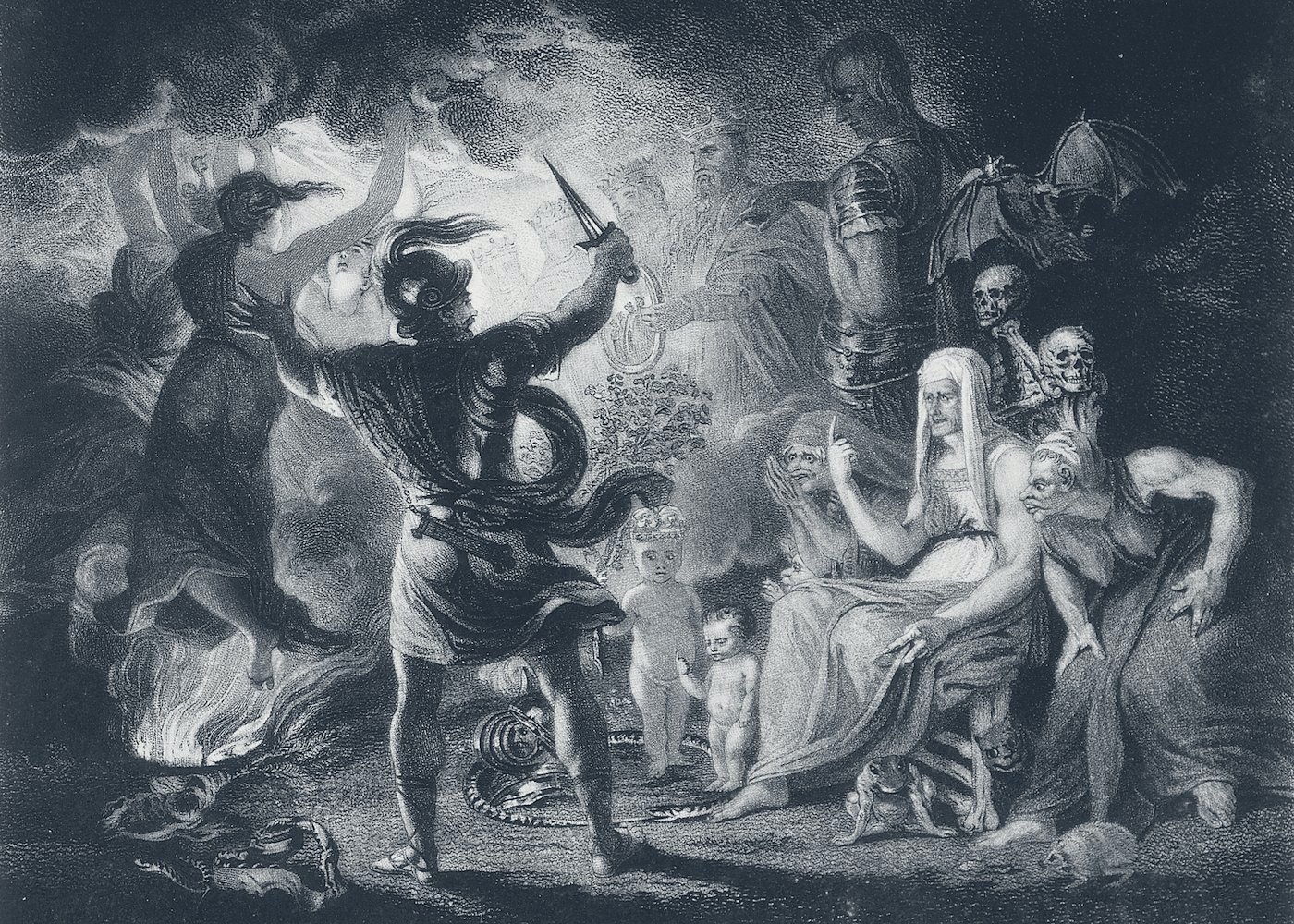
The comfort of daylight was eked out with puffed-up embers, tallow candles and pine slivers, rich in turpentine and pitch, burning brightly in clay dishes.[4] Labouring couples like Hugh and Mary Parsons went to bed as soon as their chores were done. The best bed was usually in the hall, near the fire, sometimes behind a wooden screen, or in the parlour, which might have its own, smaller fireplace.[5] Most workers, exhausted, fell asleep at once; others lay awake listening to rodents scratching in the eaves and rafters. Occasionally snakes slithered in. For every home had its weak points: windows, doors and chimneys open to the sky. Demons, too, crossed boundaries. Households were imagined as models of the state, and vice versa; and bodies and homes similarly corresponded: the hearth as the heart, the rooms like limbs, the windows eyes.[6] Preachers likened souls to castles, unlocked by wicked thoughts to let in diabolic enemies without a fight.[7]
Dreams extended a real world of danger into an imaginary one. The minds of sleeping colonists were transported to a place where the wilderness met the invisible realm and received supernatural revelations encoded as symbols of civility and savagery: angels and serpents, Christians and heathens. Here, the devil turned fantasy into fact and made witches of the weak by convincing them they had acquired his power.[8] Everything was polarized between good and bad, day and night. As one New Englander declared: ‘I saw my hellish, devilish nature opposite to God and goodness, between light and darkness.’ Satan was not God’s equal adversary – the idea was heretical – but more like a pet ape on a long chain, bestial yet restrained, and judiciously used by God to tempt sinners. The Calvinist doctrine of predestination held that some souls, the elect, were destined to rule as ‘Saints’ at the millennium, and the rest, the reprobate, were irredeemably damned. Yet even the elect needed to find their inner grace through contemplation and by avoiding sin. Not that this was easy: humans were frail, whereas demons were cunning and relentless.[9]
.jpg?auto=webp)
Protestants, among whom puritans were the most zealous, stripped the material trappings of Catholicism – icons, rosaries, rituals – from Christian devotion, leaving only the spiritual essentials. Yet, like dreams, the imagination dealt in images not ideas. The heart may have sensed Satan’s presence, but the mind’s eye saw him: his ravening glare and beckoning finger. Witches went further, reifying evil in human form – usually, but not exclusively, as women.
New Englanders, like all people of the age, venerated motherhood, a virtue witches negated.[10] Disguised as amiable wives and neighbours by day, witches were nocturnal monsters, who, like demons, crept into homes or sent envoys shaped like mice, birds and snakes. Fear of witchcraft settled along boundaries, including the line separating body and soul.[11]
.jpg)
Colonists sought to protect themselves with prayer, and their thresholds with charms: magical symbols carved into posts and beams, iron knives tucked in roof thatch, horseshoes and bunches of bay hung over doorways. A victim’s urine, in which the witch’s essence was said to linger, was boiled in stone bottles to torment the witch. Bewitched food and livestock were burned to the same end. An egg swirled in water, and a sieve pivoted between shear-blades, were also used to identify witches.[12]
Puritans detested such magic, but it was so engrained even they were not immune to it, especially at times of crisis. Though they were loath to admit it, spells were not unlike prayers, at least in purpose, and consonant with a way of seeing that understood the world as teeming with supernatural entities. Protestants knew the age of miracles had passed, yet they continued to interpret comets, eclipses, storms, plagues and birth deformities as expressions of heavenly anger.[13]
Living in New England heightened the paradox. This wild, godless world struck colonists as a natural breeding ground for witchcraft. One puritan lambasted native holy men as ‘great witches, having fellowship with the old Serpent’, drawing off his power to heal their sick. Indians were also said to use ‘diabolic skill’ to cause harm and to consort with ‘infernal spirits’. But, again, puritans distanced themselves from indigenous ‘superstition’ because their own sense of the miraculous was, in essence, unnervingly similar. Conversely, a closeness between English and native beliefs absolved puritans from superstition – a predilection for demons, ghosts and witches – as if the godly might be forgiven for slipping into popish error in a pagan land. America’s real witchcraft, as a pernicious crime to be stamped out, lay not among the Indians but in colonists themselves: a disease that they they imported from the old country to the new, seeded there and allowed to flourish.[14]
Springfield had not at first been obsessed with witches, whose agency was often too obscure to detect with certainty. Settlers knew they existed, but saw most misfortunes as natural or divine in origin. But from the later 1640s, as word of witch- trials overseas and in New England spread, the problems Springfield’s people brought to William Pynchon were more often of a supernatural kind. George Moxon [Springfield's long-standing minister] found his congregation increasingly anxious about the devil, which he felt damaged trust in God’s mercy.[15] Suspected bewitchment and demonic possession were not, however, merely spiritual matters: they were matters of law. Pynchon habitually consulted Dalton’s Countrey Justice, the English magistrate’s handbook: its 1630 edition included advice from Richard Bernard, a godly clergyman in Old England, about the secret marks where witches supposedly fed their diabolic imps.[16] Most puritans had also read the eminent Calvinist theologian William Perkins, whose treatise on witchcraft stressed both its dangerous reality and, frustratingly, the scarcity of hard evidence for it. Other works took a similar line.[17] The Massachusetts legal code ranked witchcraft third in heinousness after blasphemy and idolatry, defining it as ‘fellowship by covenant with a familiar spirit’, but without guidance for proving it. Technically, like all felonies, witchcraft required two witnesses – but who ever actually witnessed this most secret of crimes?[18]
.jpg)
More than a year before Hugh and Mary’s arrest, in the autumn of 1649, some Springfield farmers had told Pynchon a troubling tale.[19] They lived south of the town, across the surging Mill River, in an expanse of wetland: ‘Masacksic’, which colonists called ‘the long meadow’.[20] This had been divided up for grazing, but some found it more convenient to build homes there, despite its being several miles from the meeting house. By nightfall it was also quieter and gloomier than anywhere in town. Mists crept across the marshes, and glowing lights had been seen, as elsewhere in New England, where witnesses described cascading sparks and flames darting like arrows.[21] One of these men, Joseph Parsons (unrelated to Hugh Parsons), believed that his wife was gripped by an unnatural power.
An early settler in Springfield, Joseph had married Mary Bliss in Hartford, thirty miles downriver, in November 1646, and a year later her widowed mother and four brothers followed her north. The Bliss family had emigrated from Devon in the 1630s, but Mary’s father died in 1640, leaving her mother with ten children. Mary’s marriage to Joseph Parsons brought fresh hope, especially after the arrival of two sons.[22] But when the youngest boy, just five months old, died in June 1649, Mary was seized by a distressing compulsion to leave the house at night, wandering the meadow in her shift, blind or by moonlight, in the company of a mysterious woman, whom neighbours saw but never identified. Joseph locked the front door and hid the key; but his wife always found it and was gone when he awoke. She had an uncanny ability, he said, to find any lost or hidden object and had been seen wading into the swamp, yet she’d always return dry as a bone. Joseph and his neighbours asked Pynchon for his reading of the matter. Pynchon merely expressed surprise: he ‘could not tell what to say to it or what to think’.[23]
.jpg)
Pynchon’s non-committal stance was not out of character. It was in his nature to observe ‘holy silence’, defined by the theologian William Perkins as reserving judgement about ‘things which are secret in our neighbour’. Gradually, though, spreading suspicions of witchcraft, coupled with growing doubts about Pynchon’s own position, made him more inclined to speak out, to discover the truth and re-establish order. History had shown that judicious governors tended to take witch-fears more seriously when their own equilibrium was threatened.[24] This is how it had been in Pynchon’s home county of Essex, which had endured great hardship and religious strife, and more witch-trials than anywhere else in England.
On both sides of the Atlantic, conflict between puritan factions, brewing for many years, was as furious as the war between Protestants and Catholics. Opponents charged each other with diabolic allegiance, and freethinkers were denounced as heretics, which in Massachusetts was a crime akin to idolatry and witchcraft. This religious and political upheaval left its mark on the colonial population, and by winter news was circulating of a witch-hunt in England, which had begun in Essex (half a day’s ride from old Springfield) before spilling over into Suffolk. Crusading witchfinders were hiring midwives to search suspects and encouraging witnesses against them. It was a purge that was to make a dark and lasting impression in New England[25] ■
1. For Jonathan Taylor’s deposition: WPDB, ff. 24v–25r (7 April 1651). The Taylors probably arrived late 1648: DH, p. 100; FCHS, p. 43; CJWM, p. 217. Parish registers have several possibilities for Jonathan’s birth, from Cornwall to Kent; the latter is most likely;
2. William Pynchon’s Deposition Book, 1650–51, New York Public Library, Mss Col. 1900 (‘Testimony against Hugh Parsons, charged with witchcraft’). WPDB, f. 7r (William Branch, 13 March 1651);
3. Carl Bridenbaugh, ‘Yankee use and abuse of the forest in the building of New England, 1620–1660’, Proceedings of the MHS, 89 (1977), pp. 5–7; Abbott Lowell Cummings, The Framed Houses of Massachusetts Bay, 1625–1725 (Cambridge, MA, 1979), pp. 23–5, 29–30; Wright, Early Springfield, p. 20; LNL, p. 436; WPAB, p. 218; Wright, Genesis, pp. 21–2; John Demos, Circles and Lines: The Shape of Life in Early America (Cambridge, MA, 2004), pp. 2–4, 5–6. On buying glass in Springfield in 1653: HLAS, ESMC, ESM-05-01-01,p. 95;
4. Dow, pp. 96–7; Hampden County, p. 76; Thomas Franklin Waters, Ipswich in the Massachusetts Bay Colony, 2 vols. (Ipswich, MA, 1905–7), i, p. 26;
5. Laurel Thatcher Ulrich, Good Wives: Image and Reality in the Lives of Women in Northern New England, 1650–1750 (New York, 1982), pp. 94–5;
6. Robert Blair St George, ‘Witchcraft, bodily affliction, and domestic space in seventeenth- century New England’, in Janet Moore Lindman and Michele Lise Tarter (eds.), A Center of Wonders: The Body in Early America (Ithaca, NY, 2001), pp. 14– 15, 18–19;
7. William Ames, Conscience (n.p., 1639), pp. 50, 93;
8. Increase Mather, An Essay for the Recording of Illustrious Providences (Boston, 1684), pp. 178–9; Ann Marie Plane, Dreams and the Invisible World in Colonial New England: Indians, Colonists and the Seventeenth Century (Philadelphia, 2014), chs. 3–4; Katharine Hodgkin, ‘Dreaming meanings: some early modern dream thoughts’, in Katharine Hodgkin, Michelle O’Callaghan and S. J. Wiseman (eds.), Reading the Early Modern Dream: The Terrors of the Night (London, 2008), pp. 109–24;
9. George Selement and Bruce C. Woolley (eds.), Thomas Shepard’s Confessions (Boston, 1981), p. 86; Darren Oldridge, The Devil in Early Modern England (Stroud, 2000), chs. 2–4; Nathan Johnstone, The Devil and Demonism in Early Modern England (Cambridge, 2006), chs. 4–5;
10. Ulrich, p. 159; Deborah Willis, Malevolent Nurture: Witch-Hunting and Maternal Power in Early Modern England (Ithaca, NY, 1995), p. 14;
11. David Thomas Konig, Law and Society in Puritan Massachusetts: Essex County, 1629–1692 (Chapel Hill, NC, 1979), pp. 177–82;
12. Hampden County, pp. 79–80; Mather, Illustrious Providences, pp. 155, 266–70; Deodat Lawson, Christ’s Fidelity the Only Shield Against Satan’s Malignity (Boston, 1693), pp. 64–5; Ulrich, p. 52; Richard Weisman, Witchcraft, Magic, and Religion in 17th-Century Massachusetts (Amherst, MA, 1984), pp. 60–61;
13. David D. Hall, Worlds of Wonder, Days of Judgment: Popular Religious Belief in Early New England (New York, 1989), ch. 2;
14. Thomas Hutchinson, The History of the Colony and Province of Massachusetts-Bay, 3 vols., ed. Lawrence Shaw Mayo (Cambridge, MA, 1936), i, pp. 399–400; GHNE, pp. 26–9, 34–5; Cotton Mather, Magnalia Christi Americana, 2 vols. (New York, 1967), ii, pp. 425–6. Archbishop George Abbot thought New England’s natives ‘marvellously addicted to witchcraft and adoration of devils’: A Briefe Description of the Whole World (London, 1656), p. 294;
15. On this problem: John Rylands Library, Manchester, English MS 524, f. 9; George Gifford, A Dialogue Concerning Witches and Witchcraftes (London, 1593), sigs. B3v, I4r–K3r;
16. Richard Bernard, A Guide to Grand-Jury Men . . . in Cases of Witchcraft (London, 1629); Richard S. Ross III, Before Salem: Witch Hunting in the Connecticut River Valley, 1647– 1663 (Jefferson, NC, 2017), pp. 19–21. On Pynchon’s law books: LNL, p. 13; CJWM, p. 31; DH, p. 78; WP, v, p. 135; MHS, Ms. N- 760 (iii), p. 22; HCRP, Wills (John Pynchon, 1703);
17. William Perkins, A Discourse of the Damned Art of Witchcraft (Cambridge, 1608), pp. 200–205, 210, 213–14, 218–19; see also Gifford, Dialogue, sigs. H3r–H4v. Pynchon may not have owned these texts, but John Winthrop did: MHS, Winthrop Library; New York Society Library, no. 78;
18. An Abstract of the Lawes of New England (1641), in Peter Force (ed.), Tracts and Other Papers Relating to . . . North America, 4 vols. (New York, 1947), iii, no. 9, p.12. On problems of proof: Edgar J. McManus, Law and Liberty in Early New England: Criminal Justice and Due Process, 1620–1692 (Amherst, MA, 1993), ch. 3; Richard Godbeer, The Devil’s Dominion: Magic and Religion in Early New England (Cambridge, 1992), ch. 5. See also Sanford J. Fox, Science and Justice: The Massachusetts Witchcraft Trials (Baltimore, 1968), ch. 4;
19. The dating is conjectural. It does not predate 1647 as Mary Bliss married Joseph Parsons in November 1646 at Hartford. William Branch, who consulted Pynchon, was living in the town in March 1649 and moved to the long meadow in late 1649 or early 1650: WPDB, f. 7r;
20. Nathaniel Bartlett Sylvester, History of the Connecticut Valley in Massachusetts, 2 vols. (Philadelphia, 1879), vol. 1, p.21;
21. Richard S. Dunn and Laetitia Yeandle (eds.), The Journal of John Winthrop, 1630–1649 (Cambridge, MA, 1996), p. 153; Hosmer, ii, pp. 155–6;
22. Henry M. Burt et al., Cornet Joseph Parsons: One of the Founders of Springfield and Northampton, Massachusetts (Garden City, NY, 1898), pp. 11–12; Henry M. Burt, The First Century of the History of Springfield: The Official Records from 1636 to 1736, 2 vols. (Springfield, MA, 1898–9), vol. 1, p. 40; Clifford L. Stott (ed.), Vital Records of Springfield, 4 vols. (Boston, 1944–5), vol. 1, pp. 12, 20, 60; Willard S. Allen, ‘Longmeadow (Mass.) families’, New England Historical and Genealogical Register, 31 (1877), p. 320. There is no record of Widow Bliss or her sons in relation to land in Springfield in 1647, but Nathaniel Bliss’s son was born there on 7 November 1647, suggesting arrival around that time;
23. Harvard Law School Library, Harvard University, Small Manuscript Collection (Special Collections), Testimony taken on behalf of Sarah the wife of James Bridgeman of Northampton, 11 August 1656), f. 2;
24. William Perkins, A Direction for the Government of the Tongue (Edinburgh, 1593), pp. 3–5; Peter Elmer, Witchcraft, Witch- Hunting, and Politics in Early Modern England (Oxford, 2016), p. 104;
25. On the impact of the East Anglian witch-hunt in New England: Francis J. Bremer, First Founders: American Puritans and Puritanism in an Atlantic World (Durham, NH, 2012), p. 258; Ross, Before Salem, pp. 22–4, 31–2, 35–6; Malcolm Gaskill, Witchfinders: A Seventeenth-Century English Tragedy (London, 2005), p. 272

The Ruin of All Witches: Life and Death in the New World
Penguin Books Ltd, 4 November 2021
RRP: £20.00 | 304pages | ISBN: 978-0241413388
*THE SUNDAY TIMES BESTSELLER*
*SHORTLISTED FOR THE WOLFSON HISTORY PRIZE*
*A TIMES, SUNDAY TIMES AND BBC HISTORY HISTORY BOOK OF THE YEAR*
In the frontier town of Springfield in 1651, peculiar things begin to happen. Precious food spoils, livestock ails and property vanishes. People suffer fits and are plagued by strange visions and dreams. Children sicken and die. As tensions rise, rumours spread of witches and heretics, and the community becomes tangled in a web of spite, distrust and denunciation. The finger of suspicion falls on a young couple struggling to make a home and feed their children: Hugh Parsons the irascible brickmaker and his troubled wife, Mary. It will be their downfall.
The Ruin of All Witches tells the dark, real-life folktale of witch-hunting in a remote Massachusetts plantation. These were the turbulent beginnings of colonial America, when English settlers' dreams of love and liberty, of founding a 'city on a hill', gave way to paranoia and terror, enmity and rage. Drawing on uniquely rich, previously neglected source material, Malcolm Gaskill brings to life a New World existence steeped in the divine and the diabolic, in curses and enchantments, and precariously balanced between life and death.
Through the gripping micro-history of a family tragedy, we glimpse an entire society caught in agonized transition between supernatural obsessions and the age of enlightenment. We see, in short, the birth of the modern world.
"Gaskill tells this deeply tragic story with immense empathy and compassion, as well as historical depth." – The Guardian
"As compelling as a campfire story ... Gaskill brings this sinister past vividly to life." – Erica Wagner, Financial Times
"A bona fide historical classic." – Sunday Times
"Simply one of the best history books I have ever read." – BBC History

Macolm recommends:
⇲ Entertaining Satan: Witchcraft and the Culture of Early New England by John Putnam Demos (Oxford University Press, 1982)
⇲ Between Two Worlds: How the English Became Americans by Malcolm Gaskill (Oxford, 2014)
⇲ The Devil's Dominion: Magic and Religion in Early New England by Richard Godbeer (Cambridge University Press, 1992)
⇲ Damnable Heresy: William Pynchon, the Indians, and the First Book Banned (and Burned) in Boston by David M. Powers (Eugene OR, 2015)
⇲ Labor in a New Land: Economy and Society in Seventeenth-Century Springfield by Stephen Innes (Princeton NJ, 1983)
Illustrative material for this excerpt is not necessarily included in the book.
Also Featured On
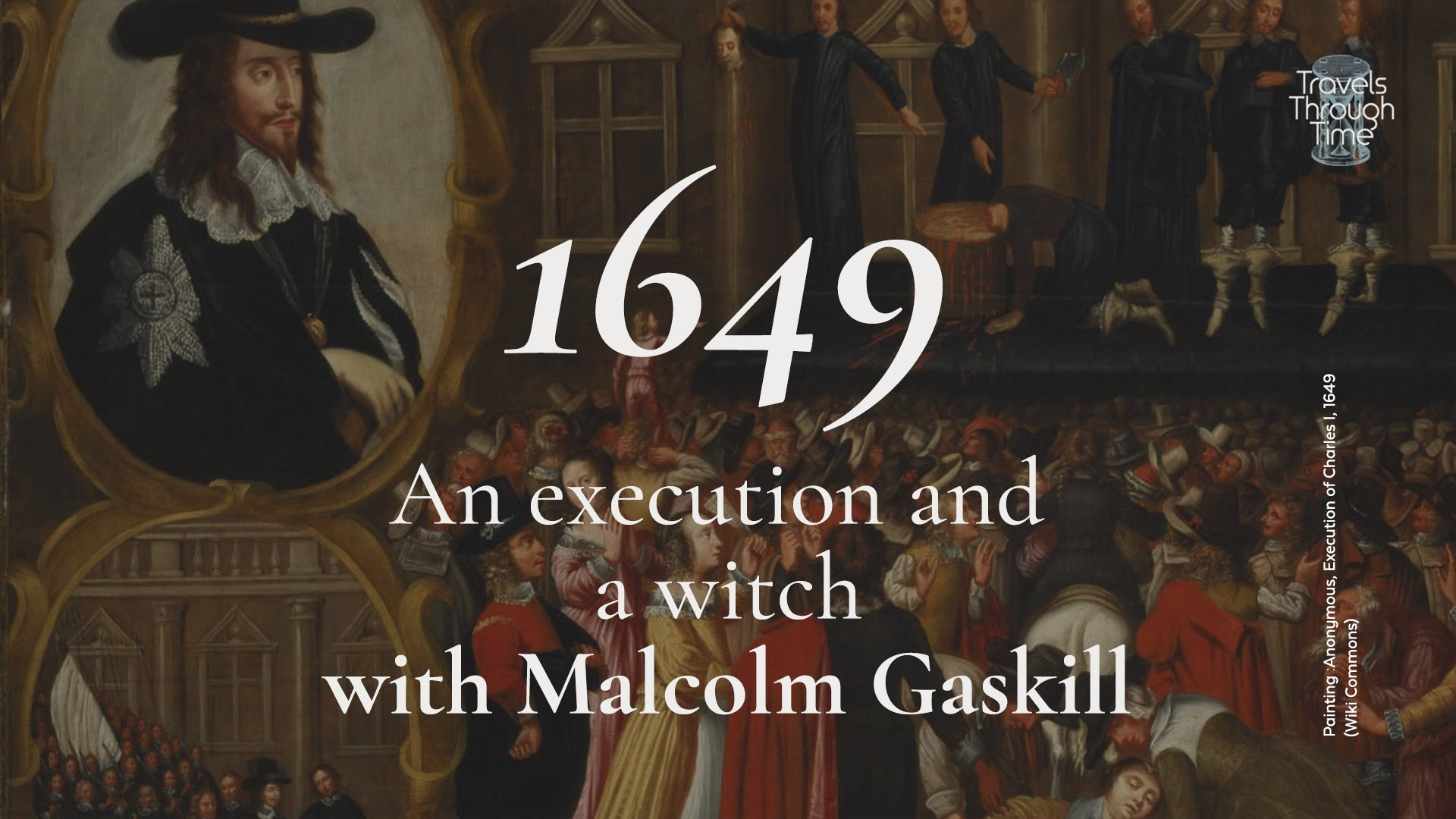
Travels Through Time Podcast: An Execution and a Witch with Malcolm Gaskill (1649)

Additional Credit
With thanks to Maddie Watts and Allen Lane. Author photograph © Malcolm Gaskill.

